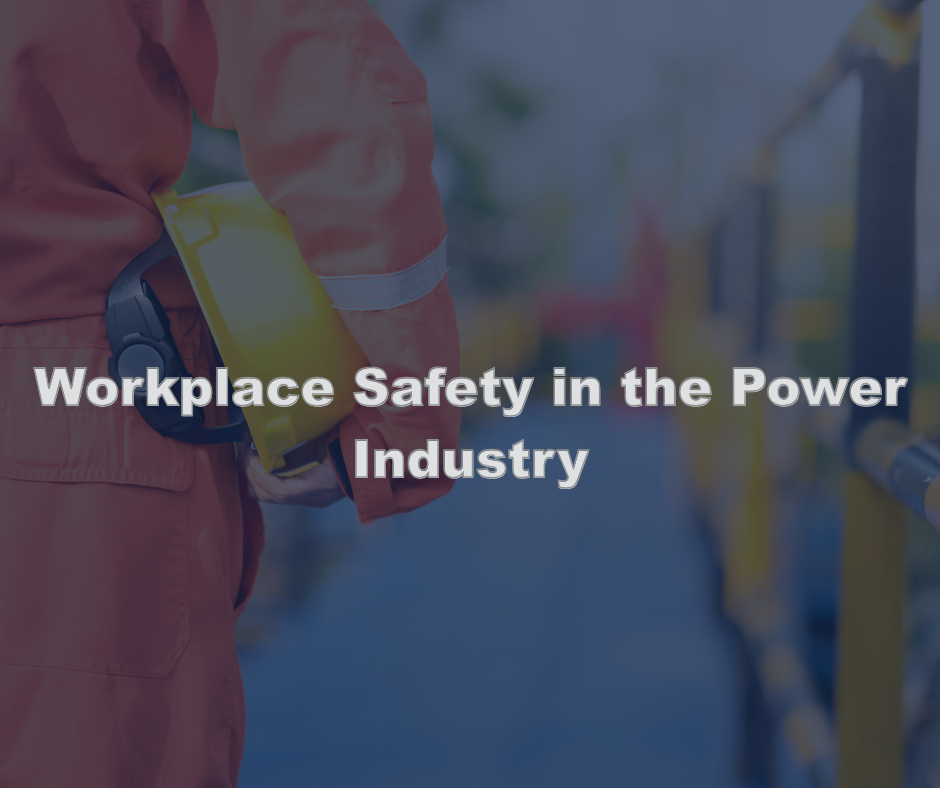
Building a Safer Workplace Environment
Workplace safety is a crucial aspect of any industry, but it holds particular significance in the power industry, where the environment often involves high-risk machinery, electrical components, and hazardous materials. Installing workplace safety in such settings is not just about compliance, but about protecting your most valuable asset—your people.
This blog will guide you through essential strategies for workplace safety in the power industry, covering hazard identification, safety protocols, training, and emergency preparedness. You’ll also find real-world examples of companies that have successfully implemented these practices, along with lessons learned from incidents that could have been prevented.
By the end, you’ll understand how creating a culture of safety benefits everyone in the organization while fostering trust and productivity.
Identifying Potential Hazards
The first step in creating a safe workplace is recognizing the potential hazards that exist. Hazards within the power industry are varied, ranging from high-voltage equipment and combustible materials to risks associated with human errors. Identifying these hazards is essential for implementing targeted safety measures.
Types of Potential Hazards
- Electrical Hazards: Exposure to high voltage can lead to electrocution, burns, or catastrophic equipment failure.
- Mechanical Hazards: Equipment with moving parts can cause injuries if not properly guarded or maintained.
- Chemical Hazards: Handling hazardous materials can result in burns, respiratory issues, or contamination.
- Human Error Risks: Misuse or improper operation of equipment often leads to accidents.
Real-World Statistics
Understanding the impact of hazards through data helps underscore the importance of safety measures. According to the Occupational Safety and Health Administration (OSHA), electrical hazards are responsible for approximately 5% of all workplace fatalities, with construction sites being among the most affected. Mechanical hazards contribute to nearly 18,000 amputations, fractures, and other serious injuries in workplaces across the United States every year, as reported by the Bureau of Labor Statistics (BLS). Chemical exposure remains a significant issue as well, with the National Institute for Occupational Safety and Health (NIOSH) estimating that over 13 million workers in the U.S. are exposed to substances that can cause respiratory issues or chemical burns annually. Lastly, human error plays a role in as much as 90% of workplace accidents, highlighting the critical need for proper training, vigilance, and adherence to safety protocols. These statistics emphasize the pivotal role of proactive hazard identification and risk mitigation in promoting safer environments.
Workplace Safety in the Power Industry- Implementing Protocols
Once hazards have been identified, comprehensive safety protocols must be put in place to address them. A strong framework of policies, procedures, and systems ensures that employees know exactly how to work safely and efficiently.
Key Safety Protocols
- Clear Operating Procedures: Develop step-by-step guides for operating machinery and handling hazardous materials.
- Physical Barriers and PPE: Include safety guards for machines and require personal protective equipment (PPE) like helmets, gloves, goggles, and insulated footwear.
- Lockout- Tagout Procedures: This involves shutting down and isolating equipment during maintenance to prevent accidental start-ups.
Real-World Success
A power plant implemented a comprehensive safety program focused on standard operating procedures and regular equipment maintenance. Over the course of one year, they reduced workplace accidents by 40%, saving both lives and operational costs. Their success highlights how diligent implementation of safety protocols makes a real difference.
Regular audits ensure adherence to protocols and allow upgrades based on new safety technologies or evolving needs.
Training and Education Programs
Even the best safety protocols can fail without proper training. Employees need in-depth education to understand workplace hazards and how to respond appropriately.
Effective Training Approaches
- New Hire Orientation: Ensure every new worker is aware of safety procedures from day one.
- Skill-Based Training: Teach employees the proper handling of specific equipment or hazardous materials.
- Ongoing Refresher Courses: Provide regular safety updates to ensure best practices evolve with the workplace.
A Lesson in Prevention
A workplace incident at a smaller power station revealed a gap in training. An operator without proper knowledge of lockout-tagout procedures inadvertently started a machine during maintenance, resulting in an injury. After reassessing their training program and adding compulsory workshops, the station saw a dramatic drop in such incidents.
The takeaway? Frequent and comprehensive training not only mitigates risks but also empowers employees to step up as safety advocates.
Workplace Safety in the Power Industry-Emergency Preparedness
Despite all preventive measures, emergencies may still occur. Whether it’s an electrical fire, chemical spill, or natural disaster, emergency preparedness can be the difference between minor damage and a major catastrophe.
Elements of Effective Emergency Plans
- Evacuation Procedures: Ensure all employees know escape routes and meeting points.
- Emergency Response Training: Designate and prepare an emergency response team.
- Emergency Supplies: Stock first aid kits, fire extinguishers, and backup communication tools.
Exemplary Preparedness
One exemplary case involves a power generation company in California that faced a chemical spill. Thanks to their well-practiced emergency drills and detailed contingency plans, the team contained the spill within hours, avoiding environmental damage and keeping workers safe.
Emergency drills and regular reviews of the emergency action plan strengthen an organization’s response capability and instill confidence in its workforce.
Fostering a Culture of Safety
Workplace safety in the power industry requires more than protocols and checklists; it demands a culture where safety is a shared responsibility. Encourage employees to speak up about hazards, involve them in safety planning, and celebrate safety milestones to instill pride and accountability.
This culture creates an empowered workforce, reduces absenteeism due to injuries, and enhances morale overall.
Workplace Safety in the Power Industry- Next Steps
Start your journey toward a safer workplace by reviewing your current safety measures, conducting hazard audits, and investing in continuous employee training. Remember, fostering a culture of safety is not only the ethical choice but also a smart business strategy that puts people first.
Safety is a partnership, and together, we can build workplaces where everyone thrives.






